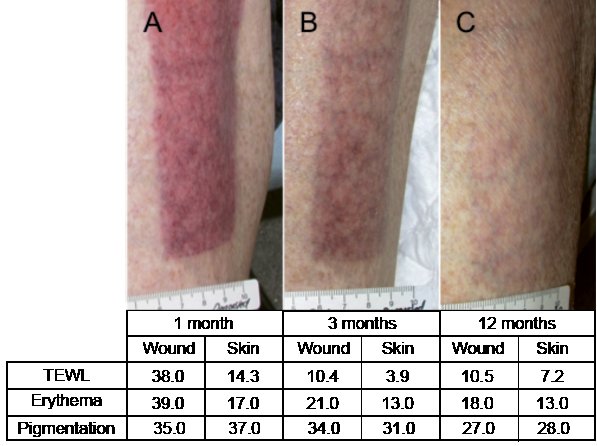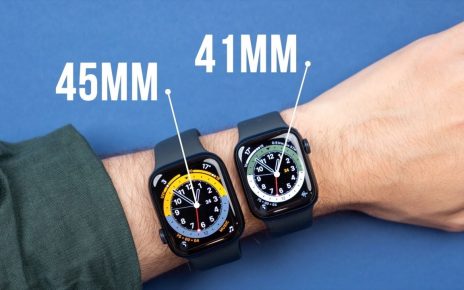Understanding the healing process of skin grafts can be complex, but visualizing it through skin graft healing stages pictures simplifies the journey. Each stage reveals essential changes, from the initial placement to the final integration with surrounding skin. These images serve as valuable references, helping patients and caregivers know what to expect at every step. By following these stages, you can better grasp how a skin graft heals and what signs to watch for along the way.
Skin Graft Healing Stages Pictures
When a person undergoes a skin graft procedure, they often feel a mix of emotions—hope, anxiety, and curiosity about the healing process. One of the best ways to understand this healing journey is through pictures illustrating the skin graft healing stages. These images can provide insight into what to expect and how the skin recovers over time.
Understanding the healing stages helps patients and caregivers recognize normal progress and identify any complications early on. In this article, we will explore the skin graft healing process in detail and discuss important aspects such as what patients should expect during each stage, factors that influence healing, and tips for promoting recovery.
What is a Skin Graft?
Before diving into the healing stages, it’s essential to understand what a skin graft is. A skin graft is a surgical procedure that involves transferring skin from one part of the body (the donor site) to another area needing coverage (the recipient site). This procedure is often used to treat:
– Severe burns
– Traumatic injuries
– Surgical wounds
– Skin diseases
Skin grafts can be categorized into different types, including:
– **Autografts**: Skin taken from the patient’s own body.
– **Allografts**: Skin obtained from a donor of the same species.
– **Xenografts**: Skin taken from another species, such as pig skin.
The choice of graft type affects the healing process and the appearance of the skin after recovery.
Stages of Skin Graft Healing
The healing process of a skin graft can be broken down into several stages. Each stage represents a distinct phase in the healing journey, and photographs of these stages can provide valuable visual cues for understanding recovery.
Initial Stage (Days 1-3)
*Pictures during this stage will show the graft site immediately after surgery.*
– **What to Expect**: After the skin graft surgery, the grafted area may appear red, swollen, and slightly oozing. Some patients may also experience mild discomfort or pain.
– **Care Tips**: Keep the area clean and dry. Follow the doctor’s instructions about bandaging and dressing changes. Avoid touching the grafted skin to minimize the risk of infection.
Adhesion Stage (Days 3-7)
*During this phase, images can reveal how the graft starts to adhere to the underlying tissue.*
– **What to Expect**: The graft begins to adhere to the surrounding skin. Redness may still persist, and fluid accumulation may occur beneath the graft.
– **Care Tips**: Monitor for signs of infection such as increased pain, redness, or discharge. Maintain good hygiene to aid adhesion.
Revascularization Stage (Days 7-14)
*Pictures in this phase can illustrate the formation of blood vessels.*
– **What to Expect**: New blood vessels begin to form in the graft. The skin color may start to change, indicating better circulation. The area might still be pinkish but will show signs of healing.
– **Care Tips**: Continue proper dressing changes and avoid strenuous activities. Protect the grafted area from sun exposure, as new skin is sensitive.
Proliferation Stage (Weeks 2-4)
*At this stage, visuals can highlight the appearance of new skin cells and stabilization of the graft.*
– **What to Expect**: The graft should start blending in with the surrounding skin. This stage is characterized by the proliferation of cells and sometimes itching as nerves regenerate.
– **Care Tips**: Applying recommended moisturizers can help alleviate itching. Always consult with your healthcare provider about any topical products.
Maturation Stage (Weeks 4-12)
*During this phase, photographs will depict the gradual maturation and remodeling of the skin.*
– **What to Expect**: The graft continues to mature. The color of the graft may become darker or lighter and more similar to surrounding skin. Scarring will also become noticeable.
– **Care Tips**: Protect the grafted area from sun damage. Use sunscreen when outdoors and keep the area moisturized to promote healing.
Long-Term Healing Stage (3 Months and Beyond)
*Images at this stage will illustrate the final appearance of the graft and surrounding skin.*
– **What to Expect**: Over time, the grafted skin will continue to soften and flatten. It can take up to a year or longer for the graft to fully integrate with the surrounding skin.
– **Care Tips**: If there are concerns about the appearance or function of the graft, follow up with a healthcare professional for advice. They may recommend physical therapy or additional treatments.
Factors Influencing Skin Graft Healing
Several factors can impact how well and how quickly a skin graft heals. Understanding these factors can help individuals prepare for their recovery journey.
Patient Factors
– **Age**: Younger patients often heal faster than older adults.
– **Overall Health**: Conditions like diabetes or immune disorders can slow healing.
– **Lifestyle**: Smoking and poor nutrition can negatively affect recovery.
Graft Factors
– **Type of Graft**: Autografts generally heal better since they come from the patient’s own body.
– **Thickness of Graft**: Thicker grafts may take longer to heal compared to thinner ones.
Environmental Factors
– **Moisture Levels**: Proper moisture helps with adhesion and reduces scabbing.
– **Infection Control**: Preventing infection is crucial for successful healing.
Common Complications During Healing
While most skin grafts heal successfully, complications can arise. Recognizing these early can lead to better outcomes.
Infection
Signs of infection may include:
– Increased redness
– Swelling and warmth
– Pus or other discharge
– Fever
Graft Failure
This occurs when the graft does not adhere properly. Signs include:
– Persistent pain
– Wound separation
– Lack of blood flow to the graft
Hypertrophic Scarring
Some patients may experience raised scars after healing. Though they may fade with time, treatments are available.
Tips for Optimal Skin Graft Healing
To promote healing, consider the following tips:
– **Follow Medical Advice**: Adhere to your doctor’s instructions regarding care and follow-up appointments.
– **Stay Hydrated**: Drink plenty of water and maintain a balanced diet rich in vitamins and minerals.
– **Rest and Recover**: Allow your body time to heal, and avoid physical activities that could strain the graft.
– **Massage Therapy**: Once healed, gentle massage can improve blood flow and reduce scar tissue.
Visual Aids for Understanding Healing Stages
Visual aids play an important role in understanding the skin graft healing process. Many patients find reassurance in seeing pictures representing each stage.
- Before Surgery: Pictures of the affected area before the graft.
- Immediately Post-Op: Photos showing the graft site right after surgery to illustrate initial redness and swelling.
- Adhesion Stage: Images depicting the graft adhering to the underlying tissue.
- Revascularization: Visuals of new blood vessels forming around the graft.
- Maturation Stage: Pictures showing changes in color and texture as the skin matures.
- Final Appearance: Photos illustrating the healed graft, showcasing its integration with surrounding skin.
Incorporating pictures into educational materials can greatly enhance understanding and provide a realistic expectation of the healing process.
By following this guide about skin graft healing stages and viewing relevant pictures, patients and their families can gain insight into what to expect throughout this journey. Whether it’s taking care of oneself post-surgery or discussing concerns with a healthcare provider, knowledge is a powerful tool.
The road to recovery may have its ups and downs, but with patience and proper care, many patients can look forward to a successful healing process. Whether you’re looking for information for yourself or a loved one, knowing the stages, potential complications, and tips for healing makes a significant difference in the overall experience.
Burn Skin Graft
Frequently Asked Questions
What are the common signs of skin graft rejection?
Common signs of skin graft rejection include increased redness around the graft site, swelling, pain, or tenderness in the area. You may also notice blistering or unusual drainage from the site. If the graft starts to look darker or changes color significantly, it could indicate rejection. It’s crucial to notify your healthcare provider if you experience these symptoms.
How can I care for my skin graft during the healing process?
Caring for your skin graft involves keeping the area clean and dry. Follow your doctor’s instructions on how to clean the graft site and when to change dressings. Avoid exposing the graft to direct sunlight and refrain from scratching or picking at the area. Additionally, keep an eye out for any signs of infection or rejection, and contact your healthcare provider if you have concerns.
What factors can affect the healing time of a skin graft?
The healing time of a skin graft can be affected by several factors, including the type and size of the graft, the location on the body, the individual’s overall health, and any underlying conditions such as diabetes or circulatory issues. Lifestyle factors, such as smoking and nutrition, can also influence the healing process. A healthy lifestyle can promote faster recovery.
What should I expect during the skin graft healing process?
During the healing process, you should expect to see a series of stages. Initially, the graft may appear discolored or swollen. Over time, the color will normalize, and new skin will form. You might notice some scabbing as the area heals, followed by gradual fading of scars. Full healing can take several weeks to months, but you should see continuous improvement throughout this period.
Are there any activities I should avoid while my skin graft heals?
Yes, during the healing process, it’s important to avoid activities that could stress the graft site. Refrain from strenuous exercise, heavy lifting, or any activities that could lead to injury or excessive movement of the graft. Additionally, avoid swimming in pools or oceans until your doctor gives you the go-ahead to prevent infection.
Final Thoughts
Skin graft healing occurs in distinct stages, each critical for successful recovery. Observing the progression through skin graft healing stages pictures helps both patients and caregivers understand what to expect during the healing process.
These images offer valuable insights into normal responses as well as potential complications. Recognizing these stages can alleviate concerns, ensuring individuals feel informed and prepared for their recovery journey.
By studying skin graft healing stages pictures, you become better equipped to approach the healing process with confidence and awareness.





